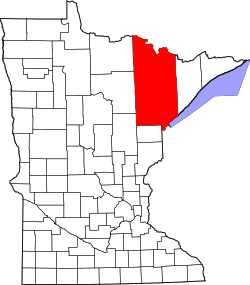2010 census
As of the census [13] of 2010, there were 4,976 people, 2,257 households, and 1,260 families living in the city. The population density was 1,110.7 inhabitants per square mile (428.8/km2). There were 2,524 housing units at an average density of 563.4 per square mile (217.5/km2). The racial makeup of the city was 95.5% White, 0.8% African American, 1.1% Native American, 0.3% Asian, 0.1% from other races, and 2.2% from two or more races. Hispanic or Latino of any race were 1.4% of the population.
There were 2,256 households, of which 27.0% had children under the age of 18 living with them, 38.9% were married couples living together, 11.6% had a female householder with no husband present, 5.4% had a male householder with no wife present, and 44.1% were non-families. 39.0% of all households were made up of individuals, and 14.8% had someone living alone who was 65 years of age or older. The average household size was 2.15 and the average family size was 2.81.
The median age in the city was 40.7 years. 22.3% of residents were under the age of 18; 7.4% were between the ages of 18 and 24; 24.7% were from 25 to 44; 27.6% were from 45 to 64; and 18% were 65 years of age or older. The gender makeup of the city was 50.2% male and 49.8% female.
2000 census
As of the 2000 census, there were 4,960 people, 2,178 households, and 1,287 families living in the city. The population density was 1,129 inhabitants per square mile (436/km2). There were 2,375 housing units at an average density of 540 per square mile (210/km2). The racial makeup of the city was 97.9% White, 0.1% African American, 0.6% Native American, 0.3% Asian, 0.1% from other races, less than one percent Pacific Islander, and 1% from two or more races. Hispanic or Latino of any race were 0.7% of the population. (Percentages may not add to exactly 100 due to rounding.) 12.8% were of Finnish, 11.9% German, 9.9% Slovene, 8.5% Italian, 8.4% Norwegian, 6.4% Irish and 5.8% French ancestry.
There were 2,178 households, out of which 28% had children under the age of 18 living with them, 44% were married couples living together, 11% had a female householder with no husband present, and 41% were non-families. 37% of all households were made up of individuals, and 20% had someone living alone who was 65 years of age or older. The average household size was 2.2 and the average family size was 2.9.
In the city, the population was spread out, with 22% under the age of 18, 8% from 18 to 24, 25% from 25 to 44, 23% from 45 to 64, and 22% who were 65 years of age or older. The median age was 42 years. For every 100 females, there were 92 males. For every 100 females age 18 and over, there were 87 males.
The median income for a household in the city was $28,472, and the median income for a family was $40,431. Males had a median income of $35,972 versus $21,406 for females. The per capita income for the city was $16,204. About 6% of families and 12% of the population were below the poverty line, including 14% of those under age 18 and 11% of those age 65 or over.







